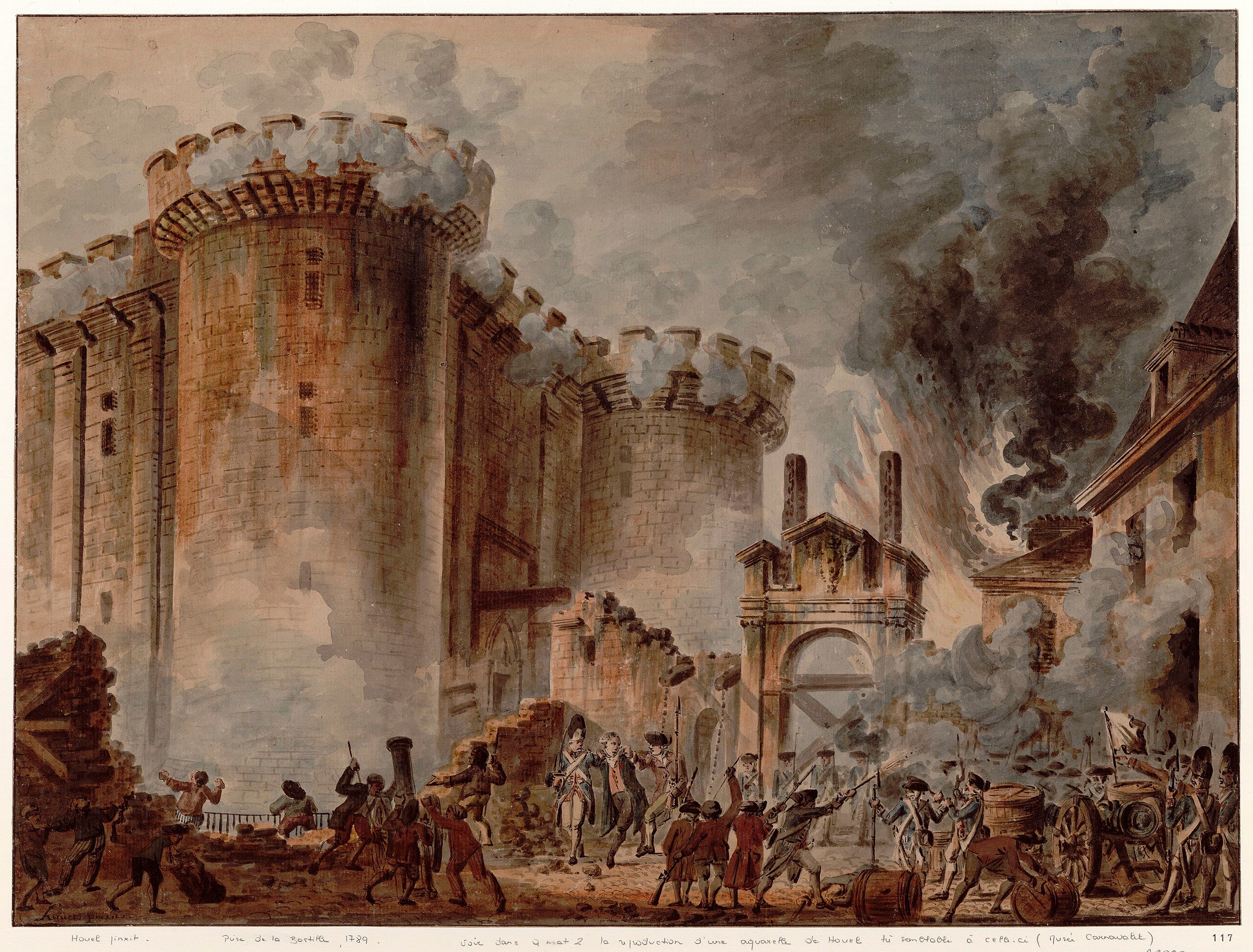One prisoner who was not freed when revolutionaries stormed the Bastille on July 14, 1789, was the Man in the Iron Mask, a legendary prisoner whose hidden identity sparked centuries of mystery and speculation.
◊
For centuries, readers and students of history have debated the true identity of the Man in the Iron Mask. Indeed, it is one of history’s most enduring mysteries – a tale of imprisonment, secrecy, and political intrigue that continues to captivate the imagination. The legend tells of a mysterious prisoner who was held in various French prisons, including the notorious Bastille, during the reign of King Louis XIV, through the French Revolution, and into the first years of Napoleon's rule. According to the most popular accounts, his face was always hidden behind a mask, said to be made of iron, though more likely of black velvet or leather reinforced with metal. Other accounts claim that he was forced to wear the mask only when being moved between prisons. The true identity of this man has never been conclusively established, fueling speculation, conspiracy theories, and literary interpretations.
Dive deep into this enduring mystery in this MagellanTV documentary.
The Legend Gains Literary Traction
The story first gained widespread attention through the writings of Voltaire in the 18th century. Voltaire, who was imprisoned in the Bastille himself, claimed that the masked man was an older brother or a twin of Louis XIV. This claim was sensational and dramatic, perfectly suited to an era fascinated by royal scandals and hidden truths. However, there is no solid evidence to confirm such a relationship, and modern historians generally regard Voltaire’s version as speculative.
The most famous adaptation of the legend came from French author Alexandre Dumas in his novel The Vicomte of Bragelonne: Ten Years Later, the final volume in the D’Artagnan Romances series. In the last section of the book, Dumas introduces the Man in the Iron Mask as Philippe, the identical twin brother of Louis XIV. In Dumas’s telling, Philippe is hidden away to protect the throne and imprisoned when he becomes a threat. The tale is filled with themes of betrayal, injustice, and identity, blending historical facts with imaginative fiction.
Historically, the the most likely identity of the prisoner is believed to have been a man named Eustache Dauger, who was arrested in 1669 and held under the custody of Bénigne Dauvergne de Saint-Mars, a jailer who accompanied him from prison to prison over the years. Letters and records from the time confirm Dauger’s existence but shed little light on his background. He was held in strict isolation, forbidden to speak to anyone, which only intensified the sense of mystery around him.
 The Storming of the Bastille by Jean-Pierre Houël,1789 (Source: Bibliothèque Nationale de France, via Wikimedia Commons)
The Storming of the Bastille by Jean-Pierre Houël,1789 (Source: Bibliothèque Nationale de France, via Wikimedia Commons)
Speculation Continues
Various theories about his identity have been proposed, including that he was a disgraced nobleman, a valet with sensitive information, or even a political enemy of the king. Some suggest he knew too much about scandals in the royal court, while others believe he was an Italian diplomat by the name of Ercole Antonio Mattioli or the Duke of Beaufort.
Despite the fascination, no theory has ever been definitively proven. The combination of real documentation, the secrecy of the French court, and the imaginative power of writers like Dumas has ensured that the legend of the Man in the Iron Mask lives on.
Today, the story remains a cultural touchstone, inspiring films, books, and scholarly debate. Whether viewed as a historical puzzle or a rich metaphor for the abuse of power and lost identity, the Man in the Iron Mask continues to intrigue and inspire, reminding us of how history and myth often intertwine.
Ω
Title Image: A mannequin of the Man in the Iron Mask at a French historical site (Source: Wikimedia Commons)


